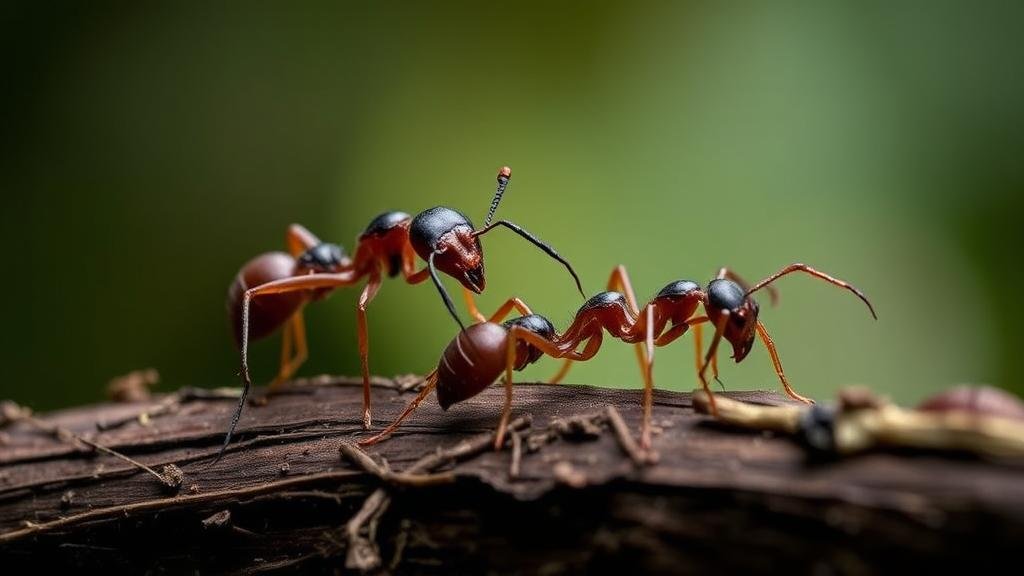Documenting the incredible teamwork of leafcutter ants in tropical forests.
Documenting the Incredible Teamwork of Leafcutter Ants in Tropical Forests
Leafcutter ants, primarily found in the tropical forests of Central and South America, are remarkable for their intricate social structures and cooperative behavior. These industrious insects have evolved a unique method of agriculture, cultivating fungus from the leaves they meticulously gather. Their symbiotic relationship with this cultivated fungus enables them to thrive in diverse and competitive habitats. This article explores the extraordinary teamwork of leafcutter ants, highlighting their collaborative efforts, communication strategies, and ecological significance.
The Foundation of Leafcutter Ant Society
Leafcutter ants belong to the subfamily Attinae, consisting of over 200 species. One of the most prominent genera is Atta, which exemplifies a complex social structure. The colony is organized into a caste system comprising reproductive females (queens), sterile females (workers), and males. Each caste plays a vital role, ensuring the colonys sustainability and efficiency.
- Queens: Queens are the founders and breeders of the colony, capable of laying thousands of eggs daily. Their primary role is to produce the next generation of ants, often establishing new colonies.
- Workers: Worker ants are responsible for foraging, cutting leaves, transporting them back to the nest, and cultivating the fungus. They can recognize the different types of leaves and select those that are best for fungal growth.
- Males: Males have a brief existence, primarily focusing on reproduction. After mating, they die shortly after, contributing to the colony’s genetic diversity.
Collective Foraging: A Model of Teamwork
The foraging behavior of leafcutter ants serves as a prime example of teamwork. In a typical foraging expedition, worker ants leave the colony in search of plant material to cut and bring back. This activity occurs in highly synchronized patterns, often involving thousands of ants working together. For example, a colony may consist of up to 8 million individuals, allowing for efficient resource gathering.
Leafcutter ants communicate using pheromones–chemical signals that convey critical information about the location of food sources. When a scout ant discovers a suitable leaf, it returns to the colony, marking a trail with pheromones. Other workers follow this trail, contributing to a systematic and coordinated effort to harvest leaves. Research shows that this method of communication enhances foraging efficiency, as it allows the colony to exploit food sources rapidly.
Fungus Cultivation: The Ultimate Team Player
After gathering leaves, leafcutter ants do not consume them directly. Instead, they meticulously chop the leaves into smaller pieces and place them in specific chambers within their nests, where they cultivate a fungal garden. The fungus breaks down the leaf material into digestible nutrients, which the ants then consume.
This agricultural practice is an extraordinary demonstration of mutualism. ants rely on the fungus for sustenance while providing the necessary environment for the fungus to grow. Studies have shown that this relationship can yield nutritional benefits for both partners, significantly increasing the colonys survival rate. An investigation by Hart et al. (2018) revealed that colonies managing to maintain healthy fungal gardens had four times the reproductive success rates compared to those that struggled.
Ecological Impact and Conservation
Leafcutter ants play a pivotal role in their ecosystems. Their activities significantly impact soil quality, plant diversity, and nutrient cycling. By harvesting leaves, they help facilitate decomposition and return essential nutrients to the soil, supporting new plant growth. Plus, their foraging habits assist in controlling the growth of specific plant species, thereby contributing to the overall health of the forest.
But, the survival of leafcutter ant colonies is threatened by habitat destruction, climate change, and pesticide exposure. Conservation efforts have become increasingly important to protect their habitats. Initiatives to promote sustainable land management can help ensure that these remarkable insects continue to flourish in their natural environments.
Conclusion: Lessons in Teamwork from Leafcutter Ants
The teamwork exhibited by leafcutter ants offers profound insights into effective collaboration and resource management. r sophisticated communication systems, organized social structure, and mutualistic relationships exemplify a well-functioning community. In the face of environmental challenges, studying these ants adaptive strategies can inspire human efforts in teamwork, sustainability, and ecological stewardship.
As we continue to explore the fascinating world of leafcutter ants, we are reminded of the intricate connections between species and the importance of preserving the delicate balance of our ecosystems. Observing these tiny architects at work urges us to reflect on the cooperative efforts needed to tackle our planets pressing challenges.



